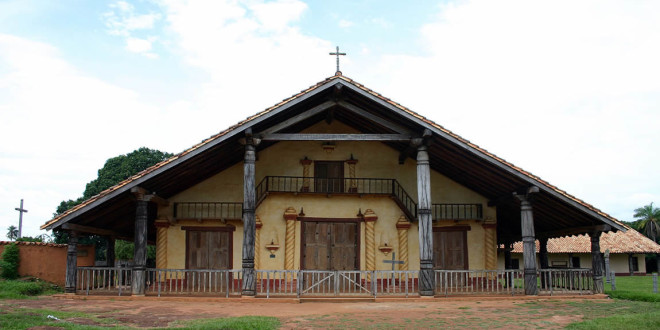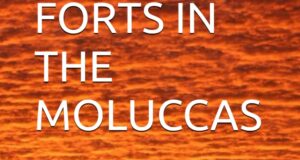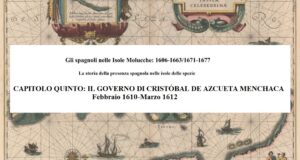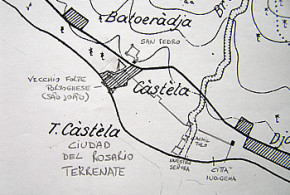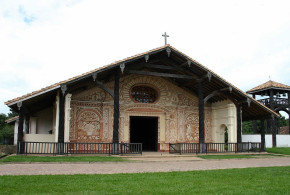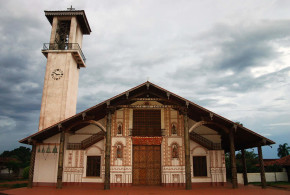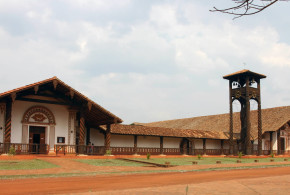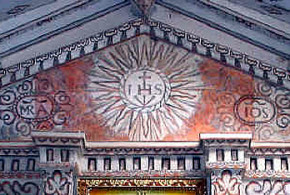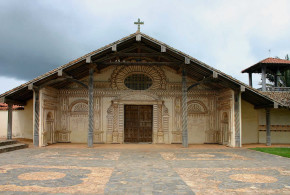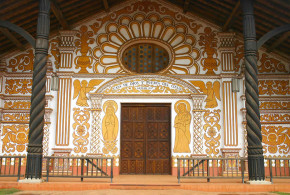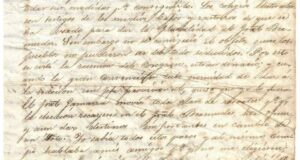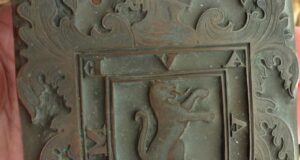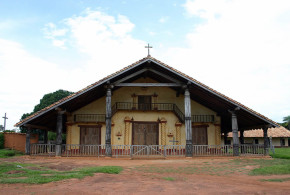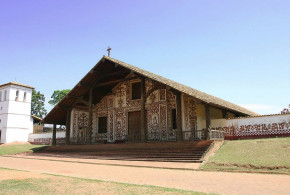Written by Geoffrey A. P. Groesbeck
Santa Ana de Velasco, founded in 1755, holds the distinction of being the only Chiquitos mission founded by one individual, the Jesuit missionary Julián Nogler. It is also is the only settlement that has its original church almost wholly intact (restoration on it is ongoing), which also happens to be the only church built after the expulsion of the Jesuits in 1767. Roughly equidistant from San Ignacio de Velasco to the northwest and San Rafael de Velasco to the south, it is a quiet town (the smallest of the mission settlements, with barely 300 souls). Most people arrive from San Ignacio, and proceed from here along to San Rafael de Velasco, San Miguel de Velasco, and back to San Ignacio de Velasco (unless completing the Jesuit Missions trek to San José de Chiquitos in the south).
Santa Ana de Velasco is the most authentic mission settlement of any in Bolivia, and its relatively small size makes it easier to take in all than the larger Chiquitos missions. With its grassy plaza and houses built off of it in rectangular fashion, Santa Ana de Velasco most closely resembles what the reducciones looked like when founded long ago. Very little has changed, and were it not for the presence of electricity and the occasional motor vehicle, the town still could be mistaken for a colonial outpost. The entrance is still marked by the Stations of the Cross, exactly as it would have appeared to an eighteenth-century visitor. Santa Ana de Velasco (along with several other Chiquitos towns) still preserves the offices of cacique (roughly equivalent to a modern-day alcalde or mayor) and cabildo (town council), which were set up by the Jesuits centuries ago to give the natives a level of official representation.
Apart from its beautiful church (the most indigenous of the mission templos, as it was built entirely by natives without Jesuit assistance or direction), Santa Ana de Velasco is famous for its music. The church’s original organ and diatonic harp are still functional, and during the church’s restoration, thousands of missionary-era musical scores were discovered. The church also houses some priceless artwork, along with a mission-era sun dial) and there is a tiny museum off the plaza (once the lodgings of the Bolivian patriot Andrés Ibáñez).
The church organ dates to ca 1750. It still is used from time to time. The church also has a custodio (custodian or vicar), one of the few colonial-era customs still intact in the Chiquitania. The current family of custodians have held this position (considered a great honour in colonial times) in an unbroken line from father to son for more than two centuries.
In the immediate vicinity, one can see the Minas de Caolín, still operating 250 years after the Jesuits left. Here lime is extracted to aid in the white-washing of buildings, exactly as it was when the Jesuits were here.
Written by Geoffrey A. P. Groesbeck

 Colonial Voyage The website dedicated to the Colonial History
Colonial Voyage The website dedicated to the Colonial History
